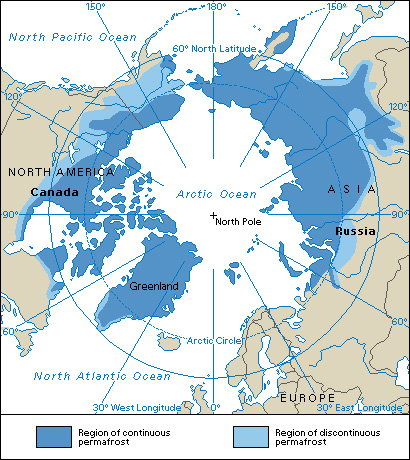Permafrost is ground that remains frozen for two or more years. Such ground may consist of rock, sand, or soil. Usually, ice surrounds this material, binding it into a solid mass. Dry permafrost occurs in rock and gravel where there is little ice. Permafrost may be continuous or discontinuous. Continuous permafrost occurs where the mean annual air temperature remains below 18 °F (–8 °C). Discontinuous permafrost has areas of unfrozen land within larger, permanently frozen areas.

Permafrost underlies about a fourth of the world’s land. In Canada, it underlies about half the land. In Canada and Russia above the Arctic Circle, the ground is frozen to depths up to 5,000 feet (1,500 meters).
In summer, soils thaw in an active layer above the permafrost. The depth of this layer ranges from 8 to 25 inches (20 to 64 centimeters) in peat (partly decayed plant matter) and from 20 to 110 inches (50 to 280 centimeters) in sand and gravel. As overall temperatures rise due to global warming, the amount of permafrost will decline. Melting permafrost releases into the atmosphere carbon dioxide, a gas known to contribute to global warming.
